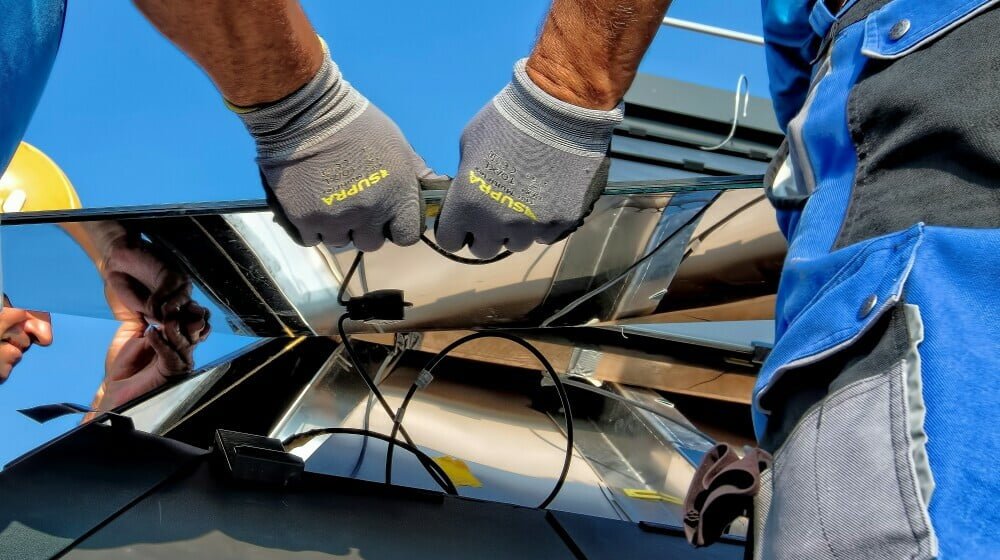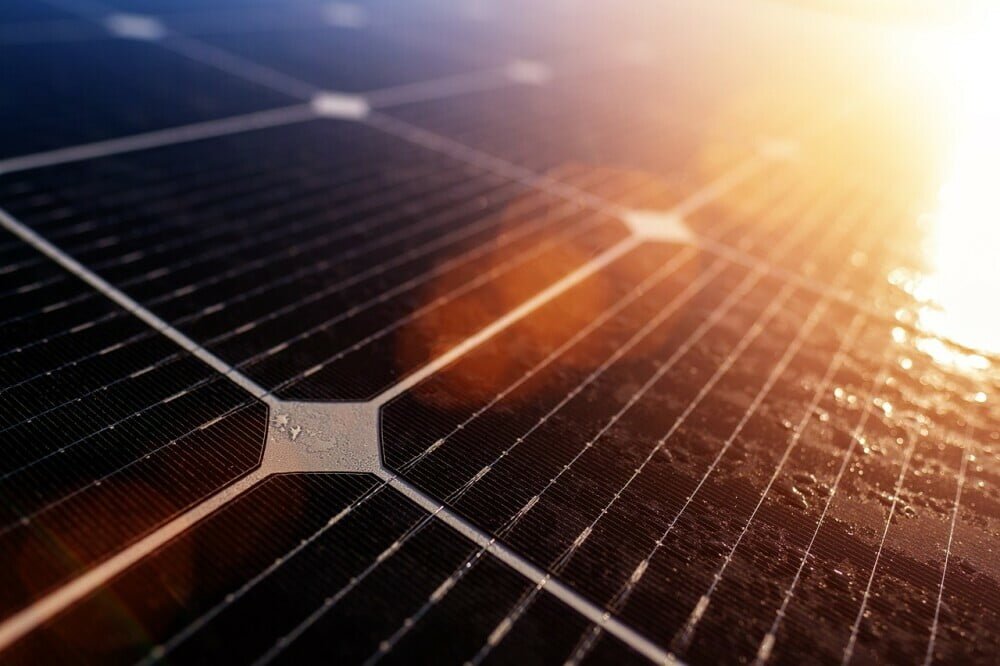In the domain of solar energy systems, one component stands out as both essential and enigmatic: the solar inverter. This crucial device plays a pivotal role in harnessing the sun’s energy by converting direct current (DC) electricity produced by solar panels into alternating current (AC) electricity usable by homes and businesses. But what exactly is a solar inverter? In this comprehensive guide, we will explore the intricate world of solar inverters, covering their definition, purpose, varieties, pros and cons, industry leaders, and how to make informed choices when selecting the right inverter for your solar array.
Definition and Purpose of an Inverter in a Solar Panel System
At the heart of every solar energy system lies the inverter, a device tasked with the vital role of converting the DC electricity generated by solar panels into AC electricity, which powers appliances, lights, and electronics in homes and businesses. Without inverters, the electricity produced by solar panels would be unusable, as most household and commercial appliances operate on AC power.
The Role Inverters Play in Converting DC to AC Power

Solar panels generate electricity in the form of DC power due to the photovoltaic effect, wherein sunlight excites electrons in semiconductor materials. However, the electrical grid and most household appliances require AC power to operate efficiently. Inverters bridge this gap by converting the DC electricity from solar panels into the AC electricity needed to power homes and businesses, thus enabling the seamless integration of solar energy into existing electrical systems.
Why Inverters Are Crucial for Both Residential and Commercial Solar Setups
Inverters serve as the backbone of both residential and commercial solar installations, enabling renewable energy generation and consumption. For homeowners, solar inverters facilitate energy independence, reduced utility bills, and environmental sustainability. Similarly, businesses benefit from solar inverters by lowering operational costs, enhancing corporate social responsibility efforts, and hedging against volatile energy prices.
Examining Solar Inverter Varieties: String Inverters and Microinverters
Solar inverters come in two primary varieties: string inverters and microinverters. Each type offers distinct advantages and is suited to different applications.
Overview of String Inverter and Microinverter Technologies
String inverters are centralized devices typically installed at a single point in a solar array, where they convert the DC electricity generated by multiple solar panels connected in series into AC electricity. In contrast, microinverters are distributed devices attached to individual solar panels, converting the DC power produced by each panel into AC power independently. This decentralized approach allows for greater flexibility and optimization in system performance.
Understanding the Central Placement and Function of String Inverters
String inverters are commonly installed in a centralized location, such as a garage or utility room, where they manage the conversion of DC electricity from multiple solar panels. These inverters are cost-effective and relatively simple to install, making them a popular choice for large-scale solar installations.
Benefits of Microinverters for Individual Panel Optimization
Microinverters are an innovation in solar technology, offering distinct advantages over traditional string inverters, especially in situations where shading or varying roof configurations impact solar panel performance. By converting DC electricity at the panel level, microinverters optimize energy production by mitigating shading effects and maximizing the output of each individual panel. This decentralized approach contrasts with string inverters, which handle conversion for entire arrays, allowing microinverters to ensure consistent performance even if one panel is shaded.
Furthermore, microinverters dynamically optimize power output for each panel, adapting to varying environmental conditions in real time. This ensures maximum energy production and extends the panel lifespan by reducing stress and wear. Their modular design offers flexibility and scalability, simplifying installation and enabling seamless integration with existing infrastructure. Additionally, microinverters enhance system reliability by isolating power conversion processes to individual panels, minimizing the risk of system-wide failures. Overall, microinverters represent a significant advancement in solar technology, unlocking the full potential of solar energy systems.
How Shades and Roof Configuration Influence Inverter Choice
 The choice between string inverters and microinverters is often influenced by factors such as shading, roof orientation, and system size. In situations where shading is prevalent or where panels are installed on multiple roof facets with varying orientations, microinverters may offer superior performance due to their ability to independently optimize each panel’s output.
The choice between string inverters and microinverters is often influenced by factors such as shading, roof orientation, and system size. In situations where shading is prevalent or where panels are installed on multiple roof facets with varying orientations, microinverters may offer superior performance due to their ability to independently optimize each panel’s output.
Comparing the Advantages of String Inverters and Microinverters
String inverters are generally more cost-effective and easier to install than microinverters, making them a popular choice for larger installations where shading is minimal. On the other hand, microinverters offer greater flexibility and optimization potential, especially in situations with shading or complex roof configurations.
Potential Drawbacks Homeowners Should Be Aware Of
While string inverters are cost-effective and reliable, they may suffer from decreased efficiency in cases of partial shading or panel mismatch. Similarly, while microinverters offer enhanced performance and flexibility, they are more expensive and may require additional maintenance over time.
Lifespan Considerations for Inverter Technology
Both string inverters and microinverters have finite lifespans, typically ranging from 10 to 25 years, depending on the manufacturer and usage conditions. Homeowners and businesses should factor inverter lifespan into their decision-making process and consider investing in high-quality, reputable brands known for their reliability and durability.
Industry Leaders: Top Solar Inverter Brands and Their Offerings
In the rapidly evolving solar energy market, several brands have emerged as industry leaders in solar inverter technology.
Identifying the Leading Brands for Both String and Microinverters
Top manufacturers of string inverters include SMA Solar Technology, SolarEdge, and Fronius, renowned for their innovative products and reliability. For microinverters, Enphase Energy and APsystems are widely recognized for their cutting-edge technology and performance.
Key Features and Innovations from Top Inverter Manufacturers
Leading inverter manufacturers continually innovate to improve efficiency, reliability, and performance. Key features found in top-of-the-line inverters include advanced monitoring capabilities, rapid shutdown functionality, and compatibility with energy storage systems.
Understanding the Importance of Brand Reputation and Reliability in Inverter Selection
When selecting an inverter for a solar installation, brand reputation and reliability are paramount considerations. Investing in high-quality inverters from reputable manufacturers ensures long-term performance, warranty support, and peace of mind for homeowners and businesses alike.
Long-Term Benefits and Cost-Effective Solutions for Various Types of Installations
While the upfront cost of microinverters may be higher than that of string inverters, the long-term benefits in terms of energy production and system optimization often justify the investment. Homeowners and businesses should consider the total cost of ownership and the potential for future savings when evaluating inverter options.
How to Prioritize Needs and Preferences in Inverter Selection
Ultimately, the choice between string inverters and microinverters should be based on individual needs, preferences, and site-specific considerations. By carefully weighing the advantages and disadvantages of each option and consulting with solar professionals, homeowners and businesses can make informed decisions that maximize the performance and efficiency of their solar energy systems.
In conclusion, solar inverters are the unsung heroes of solar energy systems, enabling the seamless conversion of sunlight into usable electricity. By understanding the role, varieties, pros and cons, industry leaders, and selection criteria for solar inverters, homeowners and businesses can navigate the complexities of solar energy installation with confidence, ultimately reaping the rewards.



